This article was medically reviewed by Luba Lee, FNP-BC, MS. Luba Lee, FNP-BC is a Board-Certified Family Nurse Practitioner (FNP) and educator in Tennessee with over a decade of clinical experience. Luba has certifications in Pediatric Advanced Life Support (PALS), Emergency Medicine, Advanced Cardiac Life Support (ACLS), Team Building, and Critical Care Nursing. She received her Master of Science in Nursing (MSN) from the University of Tennessee in 2006.
There are 9 references cited in this article, which can be found at the bottom of the page.
wikiHow marks an article as reader-approved once it receives enough positive feedback. This article received 44 testimonials and 95% of readers who voted found it helpful, earning it our reader-approved status.
This article has been viewed 277,757 times.
After you have had carpal tunnel surgery, it is important to begin exercising your wrist. However, it is important to take things slow and ease back into using your wrist. Take it week by week to ensure that you do not overexert your wrist and cause damage.
Steps
During the First Week after Surgery
-
1Follow a doctor-recommended rehabilitation plan. This plan will involve healing of your soft muscles, preventing wrist stiffness, and repairing your nerves and tendons. You will most likely have to check in with your doctor and/or physical therapist regularly to make sure that everything is going according to plan.
-
2Keep your wrist elevated as much as possible. This is particularly important in the first four days after surgery to limit swelling. You can use an arm sling while standing or moving around to keep your wrist elevated.
- When sitting or lying down, prop your wrist up on a cushion so that your hand and wrist are elevated above your chest. Doing this will help to limit swelling, which can also limit the pain you experience.
Advertisement -
3Move your fingers. Gently and slowly move your fingers, extending them so that they are straight as much as possible. After extending your fingers, bend them at the knuckles to try to touch the bottom of your palm with your fingertips. Repeat this process 50 times within an hour. Doing this will help to strengthen your weakened tendons.
- Switch between these finger motion exercises until you feel like you can do them relatively easily without stress of pain.
-
4Do finger abduction and adduction. This is a simple exercise aiming to train your fingers to move with the flexor tendons. Doing this can also help to reduce swelling. To do this exercise:[1]
- Open your hand and keep your fingers straight. Open your fingers as wide as you can, then squeeze them back together.
- Repeat this exercise ten times.
-
5Use your hand for simple everyday activities. While exercises are very beneficial, simply using your hand to do commonplace things will give it a good workout. However, don’t use your hand for prolonged periods of time, particularly if the activity involves pressure on the wrists like typing on your laptop.
- As a reminder, you should not return to work for at least two weeks after your surgery so that your wrist muscles and tendons can heal. If you force yourself to begin typing again, your pain will get triggered again and your weak tendons will become irritated.
-
6Apply ice to relieve any pain or swelling. Apply ice routinely, every day, especially in the first four days after your surgery. The cold temperature will help to reduce swelling and pain, as the cold constricts your blood vessels.[2]
- Wrap ice or a cold compress in a hand towel so that you do not apply the ice directly to your skin, as applying ice for too long a period of time could cause skin damage. Leave the cold compress on your wrist for 15 to 20 minutes.
During the Second Week after Surgery
-
1Have the post-surgery dressing removed. You will receive a heavy duty band-aid to cover the stitches. You will have to replace the band-aid as it gets soiled; when you remove it, take the time to clean your wrist and around your stitches.
- While you will now be able to take a shower and get your wrist wet, you should not dunk your wrist in a pool or bowl filled with water.
-
2Wear a wrist brace. Your doctor will give you a wrist brace to wear during your second week after surgery. You should wear it during the day, and when you are sleeping at night. The brace is meant to keep your wrist safe and in a fixed position.[3]
- You should remove the brace when taking a shower and when doing the exercises listed in the following steps.
-
3Introduce thumb flexion exercises into your previous routine. Keep on performing the previous finger motion exercises; they should be much easier to perform this week. Add in the “thumb flexion”. Do this by opening your hands and extending your fingers. Place your palm face up, then bend your thumb, trying to reach the base of your smallest finger to the other side of your hand. Return it back to its original position.
- Repeat this process about ten times.
-
4Do a thumb stretch exercise. An exercise called “Thumb stretch” is made by opening your hand palm, straightening all your fingers and turning your palm up. Grab your thumb outside so that it is pulled back.[4]
- Count to five then release. Repeat this process ten times.
-
5Try a forearm extensor exercise. This exercise can be done by extending your arm in front of you, while keeping your elbow straight and your palm pointing towards the ground. Use your other hand to hold your fingers of the extended arm and gently push it down until you feel a stretch. This will help to stretch your muscles in your forearm and the back of your wrist.[5]
- Hold this position for five seconds. Repeat this process five times throughout the day.
-
6Perform a forearm flexor exercise. This exercise can be done by extending your arm in front of you, while keeping your elbow straight and your palm pointing to the ceiling. Use the other hand to hold your fingers of the extended arm and gently push down until you feel a stretch. Pull your fingers toward your forearm. Hold this position for five seconds, then release. Repeat this process five times.[6]
- Transition into the next part of this stretch. Point your palm down and use your other hand to grab your fingers. Move them up toward your forearm until you feel a stretch. Count to five and then release. Repeat this process five times.
-
7Do some wrist curls. This one is done with the aid of a table, chair or with your other hand. Extend your arm in front of you and make a fist. Place your forearm on the table and hang your hand off the edge. Face your palm down towards the ground.[7]
- Move your hand up and down by bending your wrist; do this very gently. Repeat this process ten time, then rotate your arm so that your palm points towards the floor. Move your hand up and down another ten times.
- You can use your other hand, rather than a table, to support your elbow.
During the Third Week following Surgery
-
1Get your stitches removed. Head to the doctor’s office to get your stitches out. You will be allowed to soak your wrist in water three to four days after your stitches have been removed. You will have to wait so that the small stitch holes can heal and close.
- Use lotion or cream to rub on the scars that the stitches may have left. Doing this will help to heal scar tissue that may have formed. Do not use perfumed lotion, as this may irritate the area where the stitches were.
- Massage the area with lotion for five minutes, twice a day.
-
2Gradually use your wrist brace less and less. You will no longer have to wear your wrist brace at night but you should still wear it during the day. You will soon be able to limit the amount of time you wear it to when you are doing physical activities.
- If you decide to go back to work, you should continue to wear your brace for roughly six weeks after you return to work.
-
3Start strengthening exercises, such as the forearm extensor exercise and wrist curls. Make a fist with your hand to increase the pressure on your wrist and stretch in your forearms while performing the extensor exercise described in the previous section. This will deepen the exercise and make it more rewarding.
- The wrist curls described in the previous section can be enhanced by holding a light weight, like a water bottle or tennis ball. This extra weight can increase the intensity of the exercise by increasing the resistance put on your wrist.
-
4Try an ulnar glide exercise. This exercise is done by sitting with your back straight and looking forward. Bend your head to the side opposite to the affected arm, raise your affected arm to your side in your shoulder line. Form the “okay” sign with your hand by pushing your thumb and index finger together.[8]
- Raise your arm, then bend it toward your head while raising your elbow so that the circle made by your thumb and forefinger is placed next to your eye. The other three fingers should be placed on your face and ear. Apply pressure to your face with your wrist to fully extend your wrist. Count to five, then repeat ten times.
-
5Work on some grip exercises. Grip exercises are done at this time too to build up and strengthen your muscles at the forearm, wrist and grip area. They can be done using a chair. You can add some weights on the chair to increase the exercise intensity and give yourself more challenging exercises.[9]
- Lie on the floor on your stomach in front of the chair so that if you extend your arms you could grab its first two legs. Hold them tight with your hands while keeping your elbows straight and resting on the floor.
- The first exercise is to try to elevate the chair up in the air for ten seconds without making it touching the floor again, then return it back to the floor, the second exercise is the same but with elevating the chair for 30 to 40 seconds, you should have the minimal rest between each exercise and the other as much as possible to be able to work on the all forearm muscles group.
- The third exercise is done by raising the chair for two seconds, then lowering it down quickly without making it reach the floor, then raising it again for two seconds and lowering it and so on, the reason for the two seconds that you don’t want to perform much quick up and downs.
- The last exercise is done while making twisting motion that need more stability and strength from your muscles, just raise the chair above the floor for about twenty to thirty seconds while making a twist motion bringing it slightly quickly right and left.
Expert Q&A
Did you know you can get expert answers for this article?
Unlock expert answers by supporting wikiHow
-
QuestionIs it normal to have numbness in my fingers and have one of them lock when I close it two weeks after carpal tunnel surgery?
 Luba Lee, FNP-BC, MSLuba Lee, FNP-BC is a Board-Certified Family Nurse Practitioner (FNP) and educator in Tennessee with over a decade of clinical experience. Luba has certifications in Pediatric Advanced Life Support (PALS), Emergency Medicine, Advanced Cardiac Life Support (ACLS), Team Building, and Critical Care Nursing. She received her Master of Science in Nursing (MSN) from the University of Tennessee in 2006.
Luba Lee, FNP-BC, MSLuba Lee, FNP-BC is a Board-Certified Family Nurse Practitioner (FNP) and educator in Tennessee with over a decade of clinical experience. Luba has certifications in Pediatric Advanced Life Support (PALS), Emergency Medicine, Advanced Cardiac Life Support (ACLS), Team Building, and Critical Care Nursing. She received her Master of Science in Nursing (MSN) from the University of Tennessee in 2006.
Board-Certified Family Nurse Practitioner
-
QuestionHow long does it take to recover from carpal tunnel surgery?
 Luba Lee, FNP-BC, MSLuba Lee, FNP-BC is a Board-Certified Family Nurse Practitioner (FNP) and educator in Tennessee with over a decade of clinical experience. Luba has certifications in Pediatric Advanced Life Support (PALS), Emergency Medicine, Advanced Cardiac Life Support (ACLS), Team Building, and Critical Care Nursing. She received her Master of Science in Nursing (MSN) from the University of Tennessee in 2006.
Luba Lee, FNP-BC, MSLuba Lee, FNP-BC is a Board-Certified Family Nurse Practitioner (FNP) and educator in Tennessee with over a decade of clinical experience. Luba has certifications in Pediatric Advanced Life Support (PALS), Emergency Medicine, Advanced Cardiac Life Support (ACLS), Team Building, and Critical Care Nursing. She received her Master of Science in Nursing (MSN) from the University of Tennessee in 2006.
Board-Certified Family Nurse Practitioner
References
- ↑ https://www.youtube.com/watch?v=2v7z2nlAW-o
- ↑ https://myhealth.alberta.ca/Health/aftercareinformation/pages/conditions.aspx?hwid=ug3907
- ↑ https://www.webmd.com/pain-management/carpal-tunnel/do-i-need-a-brace-for-carpal-tunnel-syndrome
- ↑ https://www.webmd.com/osteoarthritis/ss/slideshow-hand-finger-exercises
- ↑ https://www.youtube.com/watch?v=wtQyqN2-Tm0
- ↑ https://www.youtube.com/watch?v=MibGm_T62AI
- ↑ https://www.nchs-health.org/5-wrist-exercises-for-carpal-tunnel-syndrome/
- ↑ https://www.southtees.nhs.uk/services/physiotherapy/hand-therapy/hand-therapy-exercises-patients/#UNGE
- ↑ https://www.webmd.com/pain-management/exercises-carpal-tunnel-syndrome#3-12
About This Article
In the first week after carpal tunnel surgery, talk to your doctor about what kinds of exercises you can do safely. During this time, you’ll need to keep your wrist elevated most of the time and apply ice to relieve swelling and pain. Your doctor may also recommend doing gentle hand exercises, like bending and extending your fingers or spreading them and squeezing them together. Additionally, you can use your hand for basic activities, such as using a spoon or fork, if your doctor approves it. For more advice from our Medical co-author, including how to exercise your hand 2 or more weeks after surgery, keep reading!

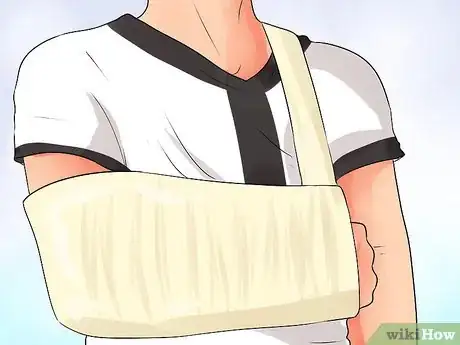
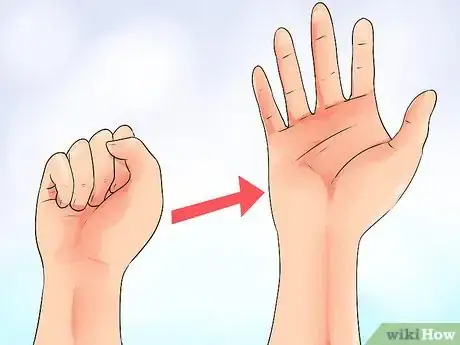
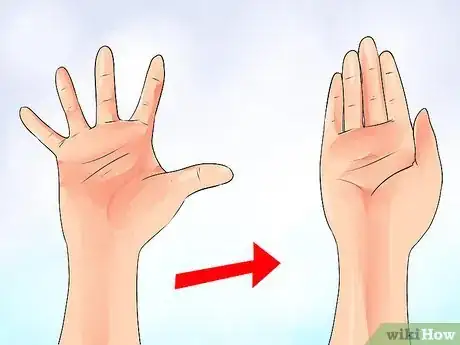
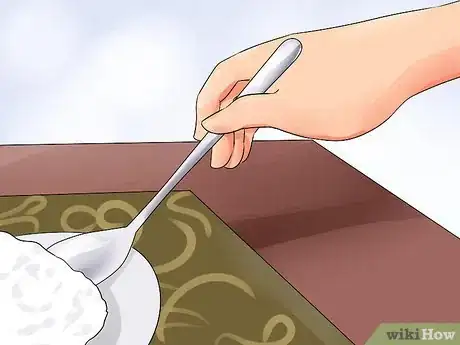

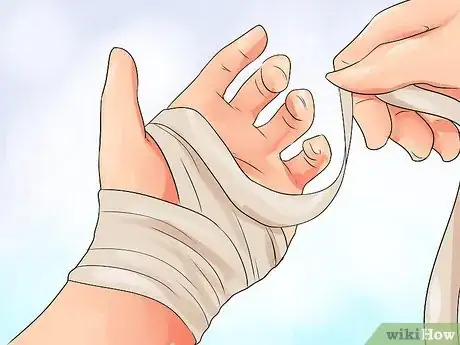

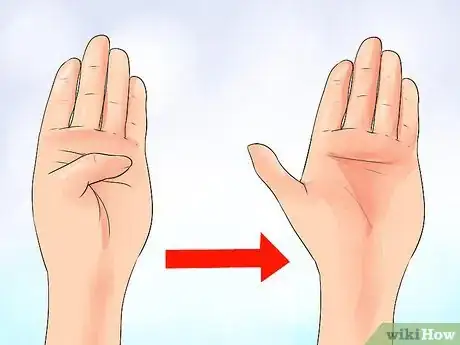
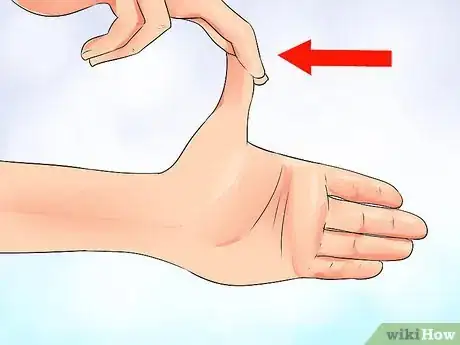
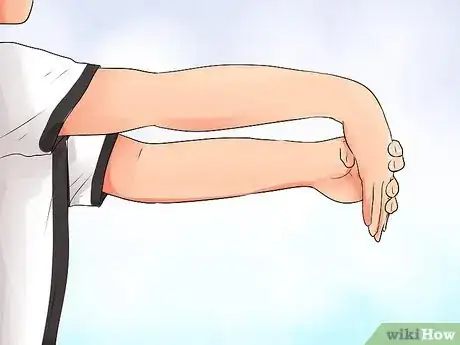
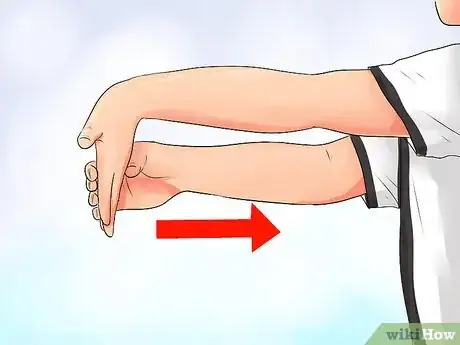
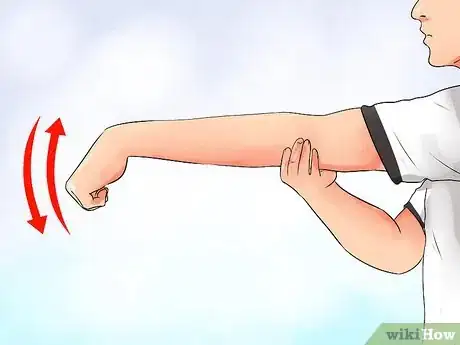

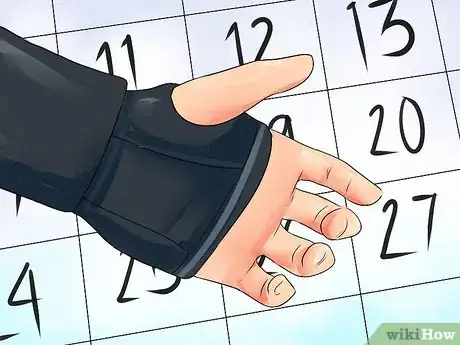
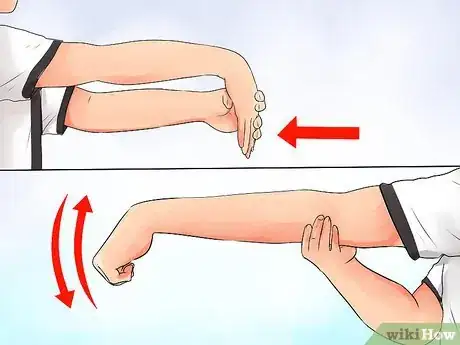



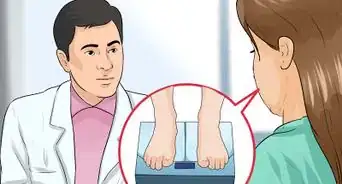
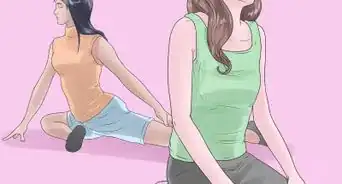
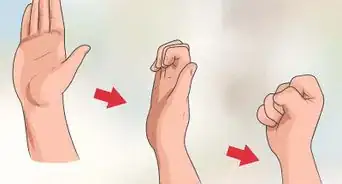



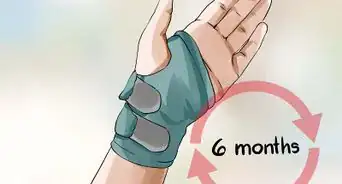
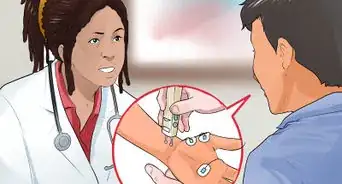

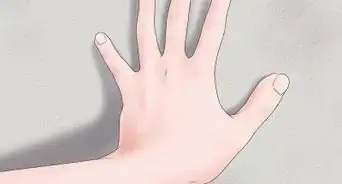













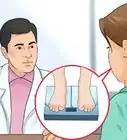

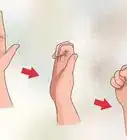



































Medical Disclaimer
The content of this article is not intended to be a substitute for professional medical advice, examination, diagnosis, or treatment. You should always contact your doctor or other qualified healthcare professional before starting, changing, or stopping any kind of health treatment.
Read More...